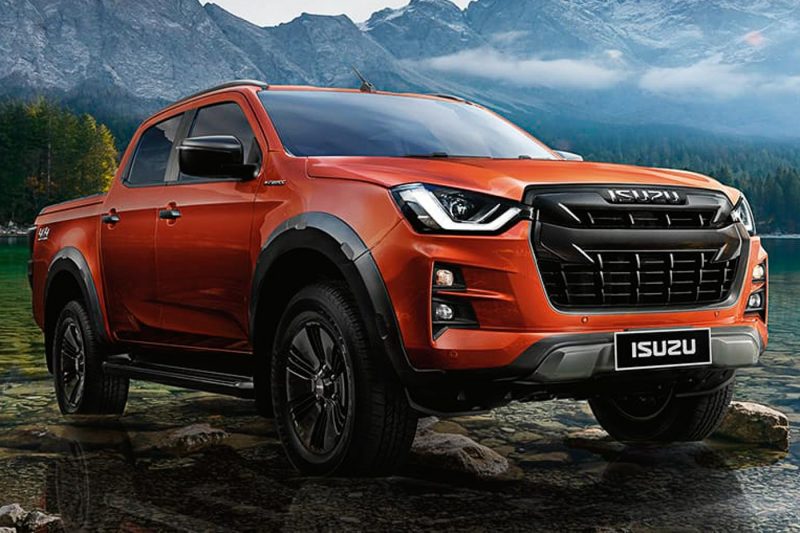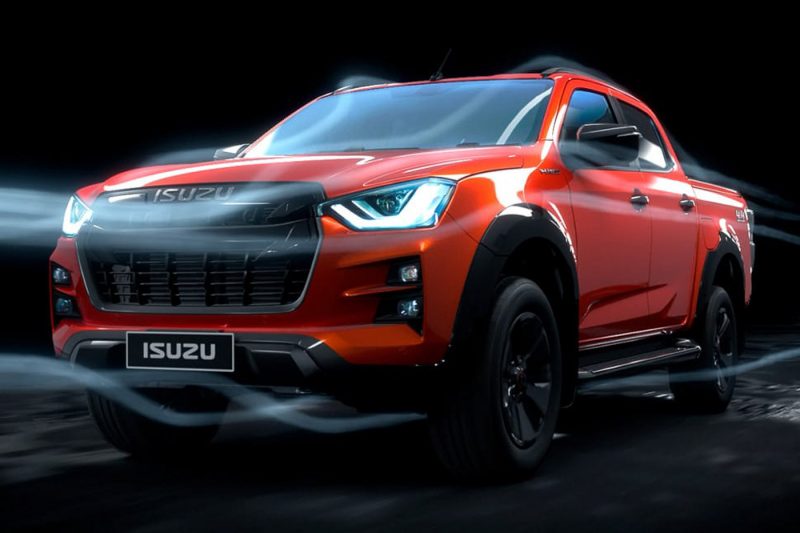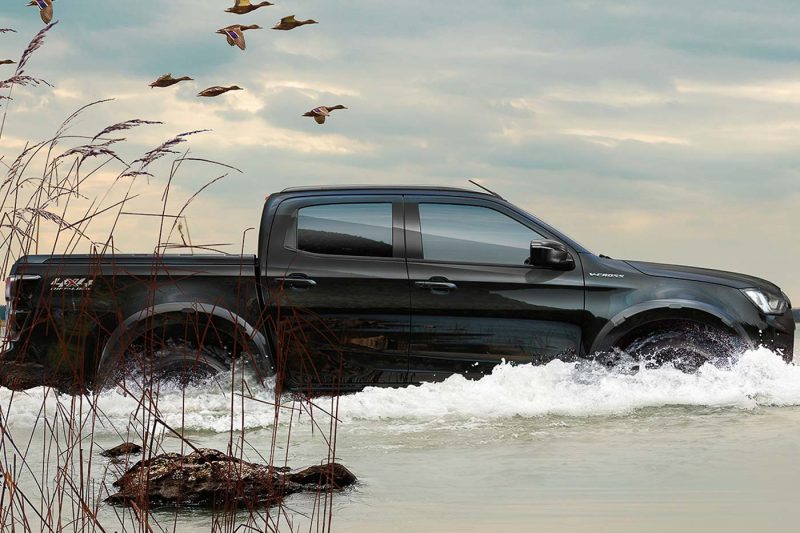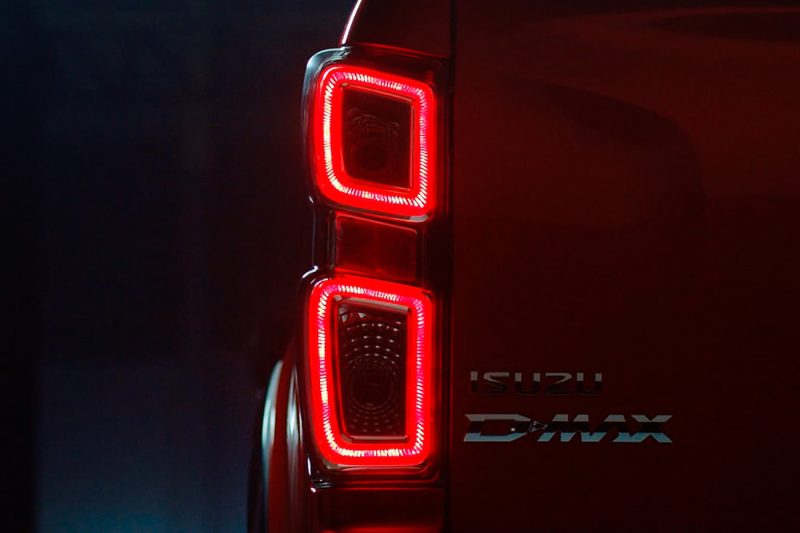After eight long years, Isuzu has finally given the D-Max a full-model change with newly improved mechanical innards to go with its refreshed exterior styling! And boy, does it look fresh!
The third-generation Isuzu D-Max gets a brand new outfit that is much more aggressive compared to its predecessor. The new large grille takes over the the entire height of the front facade, with the signature dual chrome bars neatly integrated at the top.
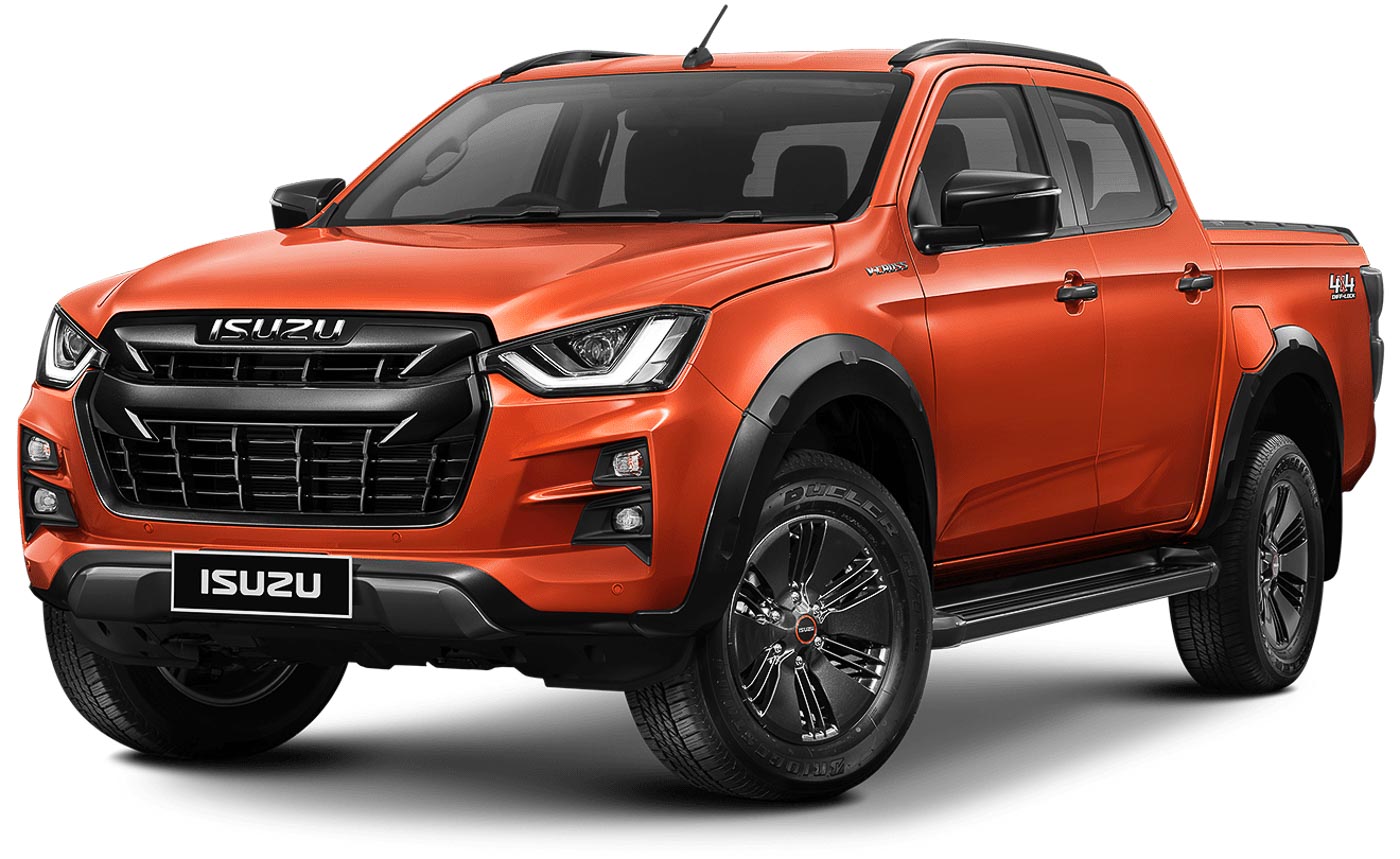
Flanking the massive front grille is the new slimmer bi-LED projectors headlights, accompanied by ‘U’ shaped LED daytime running lights. The top-of-the-line variants get an indicator and fog lamp stack that is moulded directly into the bumper, while other variants get a smaller grille and a more reserved bumper design.
Over at the rear, Isuzu gave the D-Max new ring-style LED combination taillights, paired with clear lenses that we think makes the D-Max look sleeker and sharper than before.
Isuzu has also neatly integrated the stepping shelf into the bumper for a more streamlined look. Overall, the new wedge-shaped silhouette is a result of testing done in the wind tunnels of the Japan Railway Technical Research Institute for improved aerodynamics.

Isuzu said the new D-Max is designed to reflect their three keywords: bold, emotional, and smart and we can’t help but think that they’ve nailed it!
Changes to the inside of the D-Max is also immediately apparent. Right in the centre of the dashboard is a new 9-inch infotainment display – compatible with Apple CarPlay and Android Auto – accompanied by two air-con vents at the side in a hexagonal housing. Underneath, the old odd-looking (in our opinion) circular climate controls are replaced with a toggle-switch design for the dual-zone automatic air conditioning that gives a more modern and upmarket look.

The entire dashboard of the new D-Max is also taller and wider, with contrasting materials and textured surfaces to achieve a high-end and sporty look. For workhorse applications though, you can still opt for a simple and practical instrument panel and door trim.
Isuzu said that the electrical components in the new D-Max has been completely revamped to make way for the Connected, Autonomous, Shared, and Electrified (CASE) era. Although advanced driver assistance systems aren’t present yet, the D-Max is now offered with a Blind-spot Monitoring System and Rear-Cross Traffic Alert for the first time ever!
Other improvements focused on optimising convenience and comfort include keyless entry with walk-away lock, remote engine start, 8-way parking sonar, automatic headlights and wipers, as well as the new voice-controlled infotainment system.

Further work has also been done on the inside to improve the comfort and ergonomics of the D-Max, such as the tilt and telescopic-adjustable steering wheel, additional seatbelt reminders, as well as a new polyurethane cushion material for the front seats to reduce fatigue on long journeys – available on an optional 8-way power adjustable driver’s seat.
Isuzu has incorporated more high-tensile steel plates to the structure of the new D-Max, improving body rigidity by up to 20%. Although still riding on the ladder frame platform, a new shear mount is used in place of the body mount for better driving dynamics and improved NVH levels. The improved structure rigidity and packaging allowed Isuzu to extend the loading bed on all cab types.

To further improve driving dynamics, Isuzu has also completely revamped the suspension setup of the D-Max. At the front, the third-generation D-Max gets a double-wishbone suspension with higher upper-link mounts, while the rear leaf suspension has been manufactured with a process called “warm stress shot peening” to make it more durable, yet more flexible for a more comfortable ride. The rear track of the truck has also been widened, together with a reduced mounting angle to aid stability.
Elsewhere, the steering rack has been tuned for a tighter turning radius and improved handling, while requiring less effort to turn the wheel. Brakes have also been upgraded, now featuring a larger 320 mm discs at the front, paired with two-pot calipers.

As we expected, Isuzu is using the 1.9-litre turbodiesel engine that was recently introduced in Malaysia, alongside a new 3.0-litre turbodiesel mill on the all-new D-Max. The former produces an unchanged 150 hp and 350 Nm of torque (albeit paired with a new gear ratio and control system), while the bigger 3.0-litre engine has been revamped with a new turbocharger, higher injection pressure, new combustion chamber design, and double-scissor timing gears among other changes to push output up to 190 hp and 450 Nm – 13 hp and 70 Nm increase over its predecessor!
Both engines are available with 6-speed automatic or manual transmissions. The smaller 1.9-litre mill gets a downsized torque-converter with a lockup clutch integrated with a wide-angle damper to improve fuel efficiency and response.

The four wheel drive system has also been updated, now with a single aluminium propeller shaft to achieve significant weight savings. The new D-Max also gets an electromagnetic differential lock at the rear to enhance drive transfer between two-wheel and four-wheel drive modes, as well as between high and low ratios.
Having just received the facelifted Isuzu D-Max in Malaysia a while ago, we are probably not going to see Isuzu’s new baby on our roads anytime soon. Over in Thailand, the all-new Isuzu D-Max will go on sale on 19th October, and as usual offered in both commercial and consumer variants, with single cab, extended cab and double cab body styles.
IMAGE GALLERY






